FAD magazine / By Mark Westall
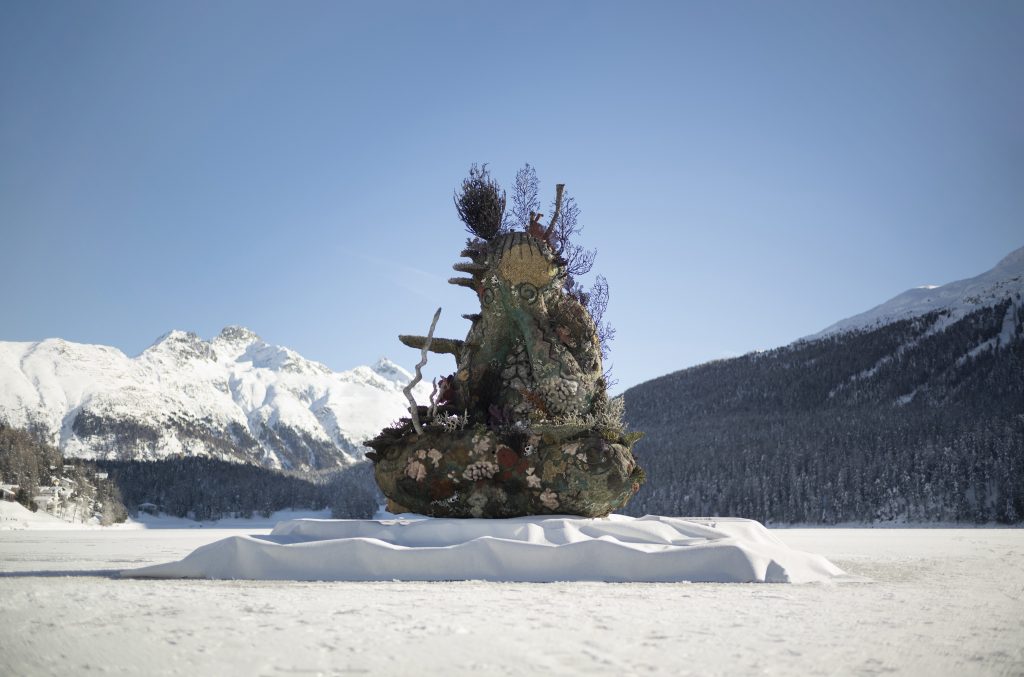
Damien Hirst, The Monk, 2014. Installation image of Lake St. Moritz, 2020. Photographed by Felix Friedmann ©Damien Hirst and Science Ltd. All rights reserved, DACS 2021
A major exhibition of over 40 works by Damien Hirst will open in St. Moritz, Switzerland, across four locations from 23rd January – 28th February 2021. Titled Mental Escapology and organised with the assistance of the city of St. Moritz, the exhibition will be presented in multiple venues including two historical buildings: the neo-classical Forum Paracelsus in St. Moritz Bad and the Protestant Church in the centre of St. Moritz.
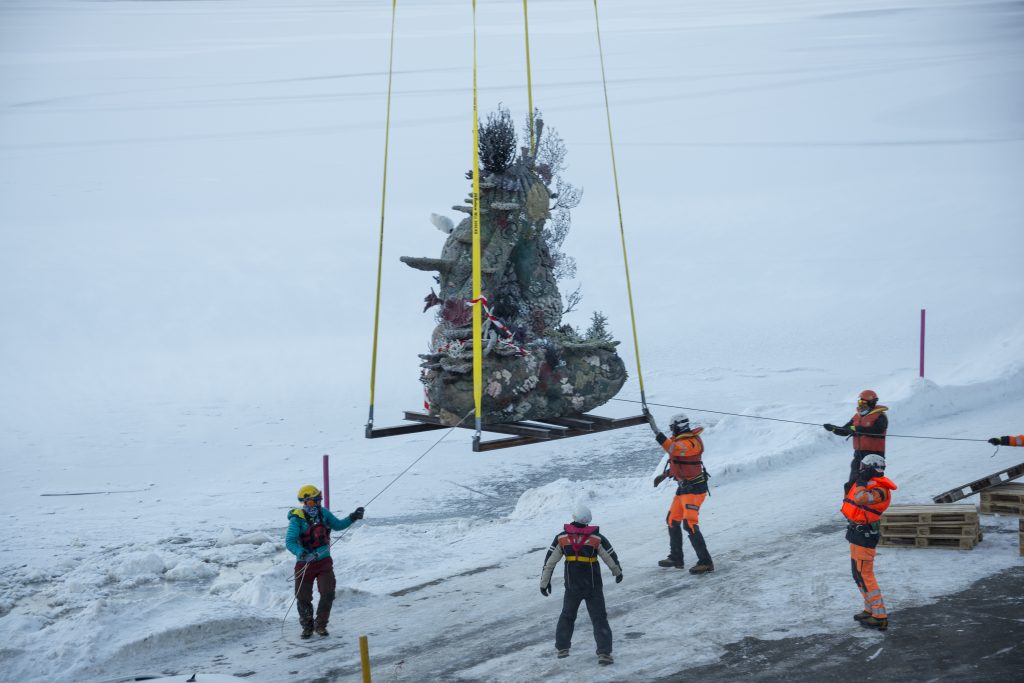
Damien Hirst, The Monk, 2014. Installation image of Lake St. Moritz, 2020. Photographed by Felix Friedmann ©Damien Hirst and Science Ltd. All rights reserved, DACS 2021
A highlight of the exhibition will be two large-scale outdoor sculptures. Hirst’s 12-foot-high sculpture The Monk will be exhibited in the centre of the frozen Lake St. Moritz, with Two Figures with a Drum installed on the north-eastern edge of the lake. The works were last seen in Hirst’s monumental 2017 exhibition Treasures from the Wreck of the Unbelievable in Venice.
The installation of The Monk represents the first time an artwork has been exhibited on the lake itself. Additionally, Mental Escapology will be Hirst’s first public exhibition in Switzerland.
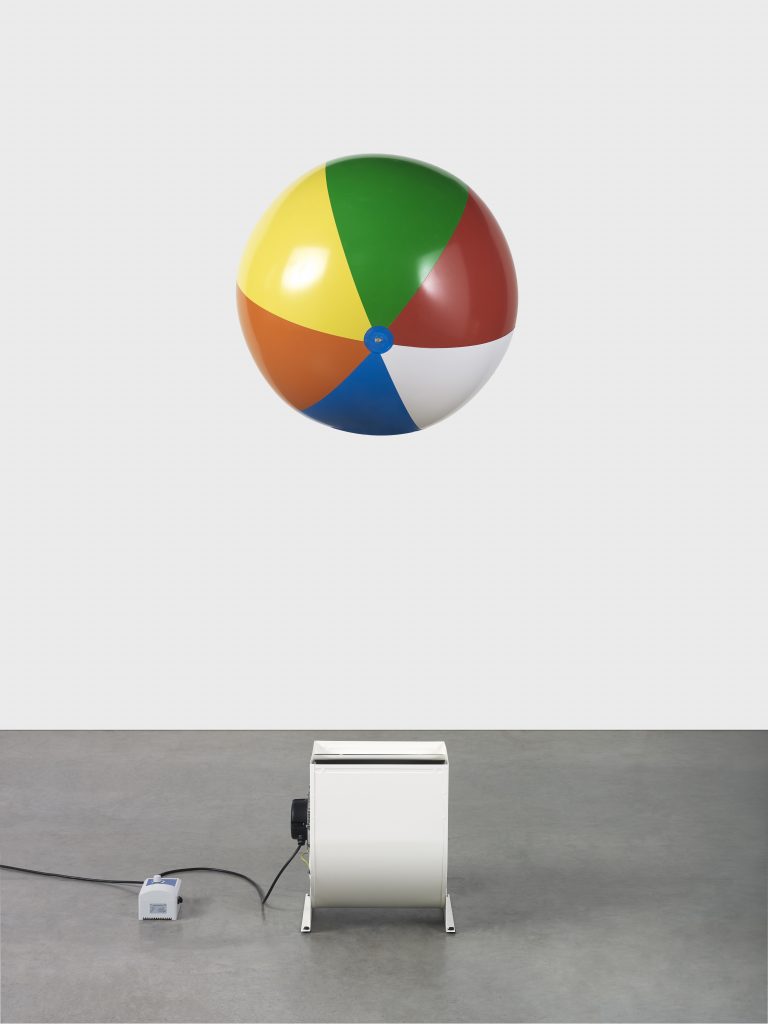
Fidelity, 1995. Photographed by Prudence Cuming Associates ©Damien Hirst and Science Ltd. All rights reserved, DACS 2021
The exhibition will also feature works from some of Hirst’s most well-known series, including Natural History, Spot Paintings, Butterfly Colour Paintings and Mental Escapology, after which the exhibition is named. The exhibition, spread across indoor and outdoor sites, will engage with both the region’s spectacular landscape and the city’s most important civic spaces in which to show art, creating a dialogue between nature, the manmade, the contemporary and the historic.
A large part of the exhibition will be shown in Forum Paracelsus, an 18th century building located on the site of a former thermal bath dating back to 1400 BC. Known across generations for the healing and therapeutic properties of its ferrous waters, the site is a fitting location for Hirst’s work in which the exploration of science and modern medicine has been an enduring theme.
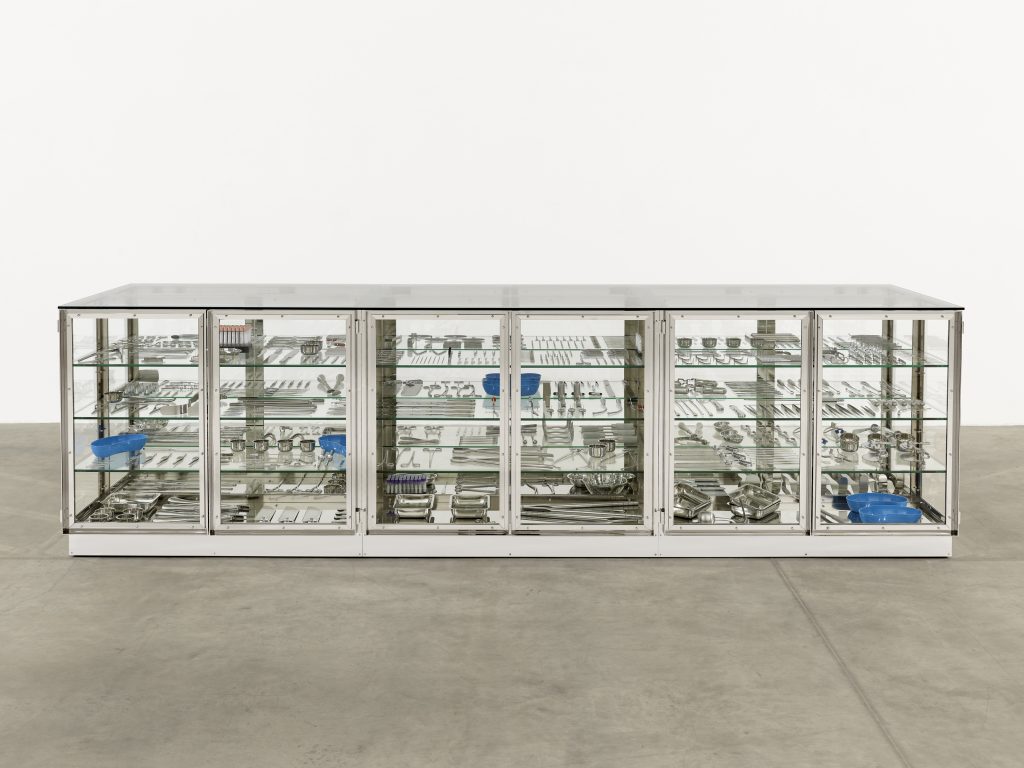
Stripper, 2006. Photographed by Prudence Cuming Associates © Damien Hirst and Science Ltd. All rights reserved, DACS 2021
Key works include a surgical instrument cabinet titled Stripper, from 2006, in which medical apparatus are meticulously arranged within a stainless steel display cabinet, previously unseen installations from Hirst’s Mental Escapology series, formaldehyde works from the Natural History series and a photorealist painting titled Surgical Tools for Caesarean.
Mental Escapology will also feature previously unseen paintings, including works from the Spot (Pharmaceutical) Paintings series Tests, Reagents, Diagnostics and Random Samples, which dates from 1998. Unlike Hirst’s best-known Pharmaceutical paintings, these works consist of unique, irregularly-sized and coloured spots that rarely follow any uniform grid structure.
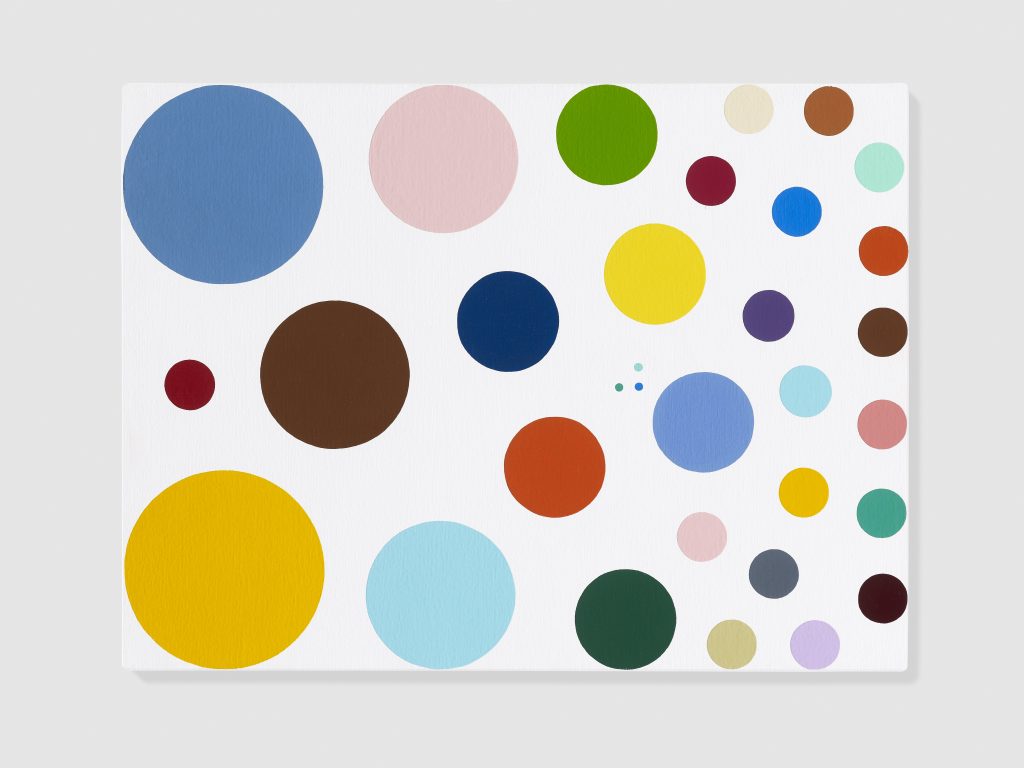
Crystal Violet, 2009. Photographed by Prudence Cuming Associates © Damien Hirst and Science Ltd. All rights reserved, DACS 2021
Exhibited in the church will be a selection of Hirst’s butterfly paintings. In his earliest series, titled Butterfly Colour Paintings, butterflies are placed in random positions on the canvas, appearing to have recently landed in wet gloss paint. In contrast, Hirst’s Kaleidoscope paintings feature vibrantly coloured butterflies arranged in intricate geometric or concentric patterns. The paintings reference the spiritual symbolism of the butterfly, such as one collection from 2008 named after entries in the Book of Psalms, and a recent collection from 2019 which takes inspiration from the ‘mandala’, a meditative instrument in the religions of Hinduism and Buddhism. Set against the beautiful but austere backdrop of a modernised Protestant church, the Kaleidoscope paintings recall stained-glass windows, further emphasising the dialogue between the secular and the spiritual.
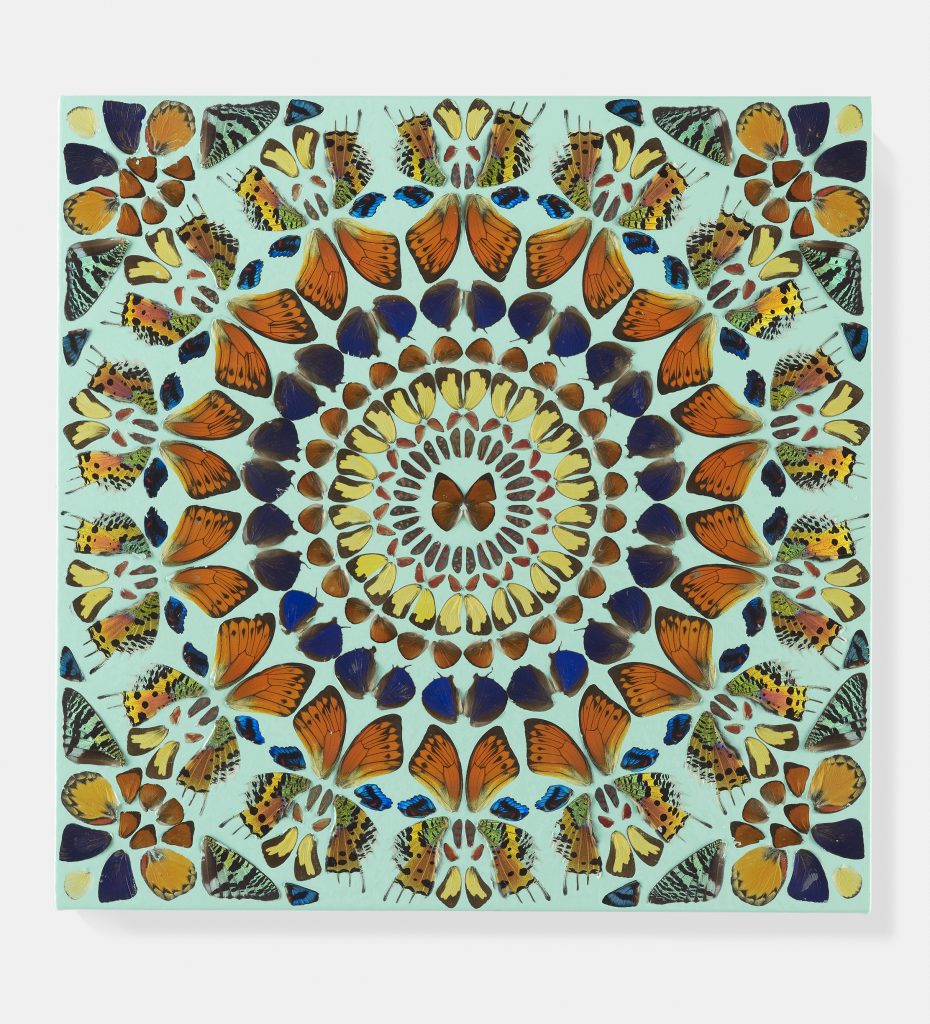
Psalm 66: Jubilate Deo., 2008. Photographed by Prudence Cuming Associates © Damien Hirst and Science Ltd. All rights reserved, DACS 2021
The exhibition has been curated by Jason Beard and produced by Oscar Humphries and Marco Voena.
https://fadmagazine.com/2021/01/08/a-major-damien-hirst-exhibition-to-open-in-st-moritz/
